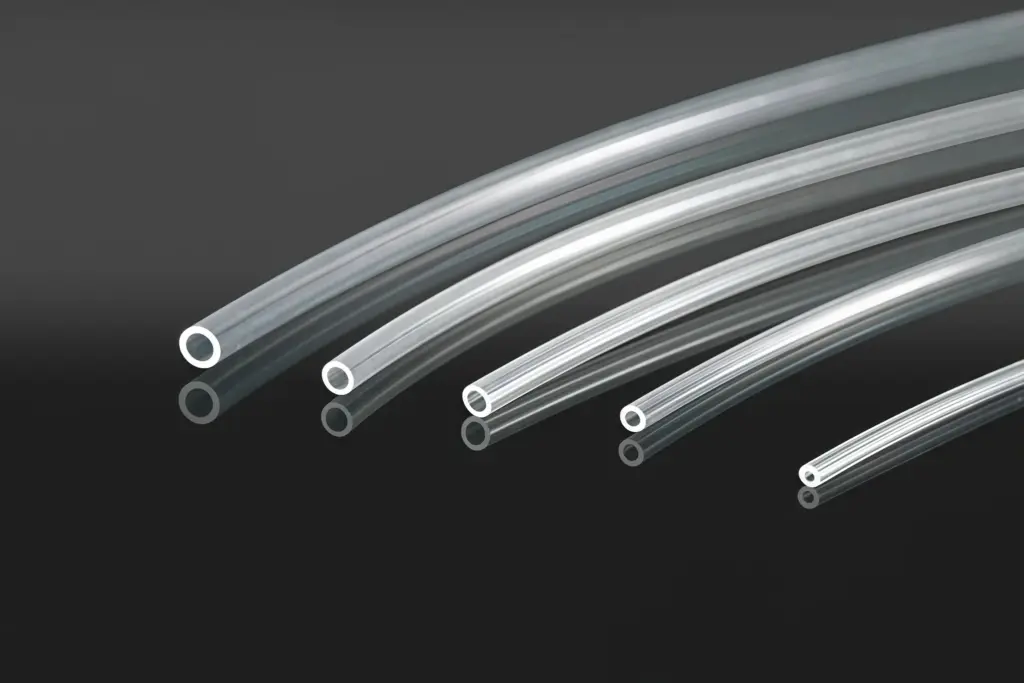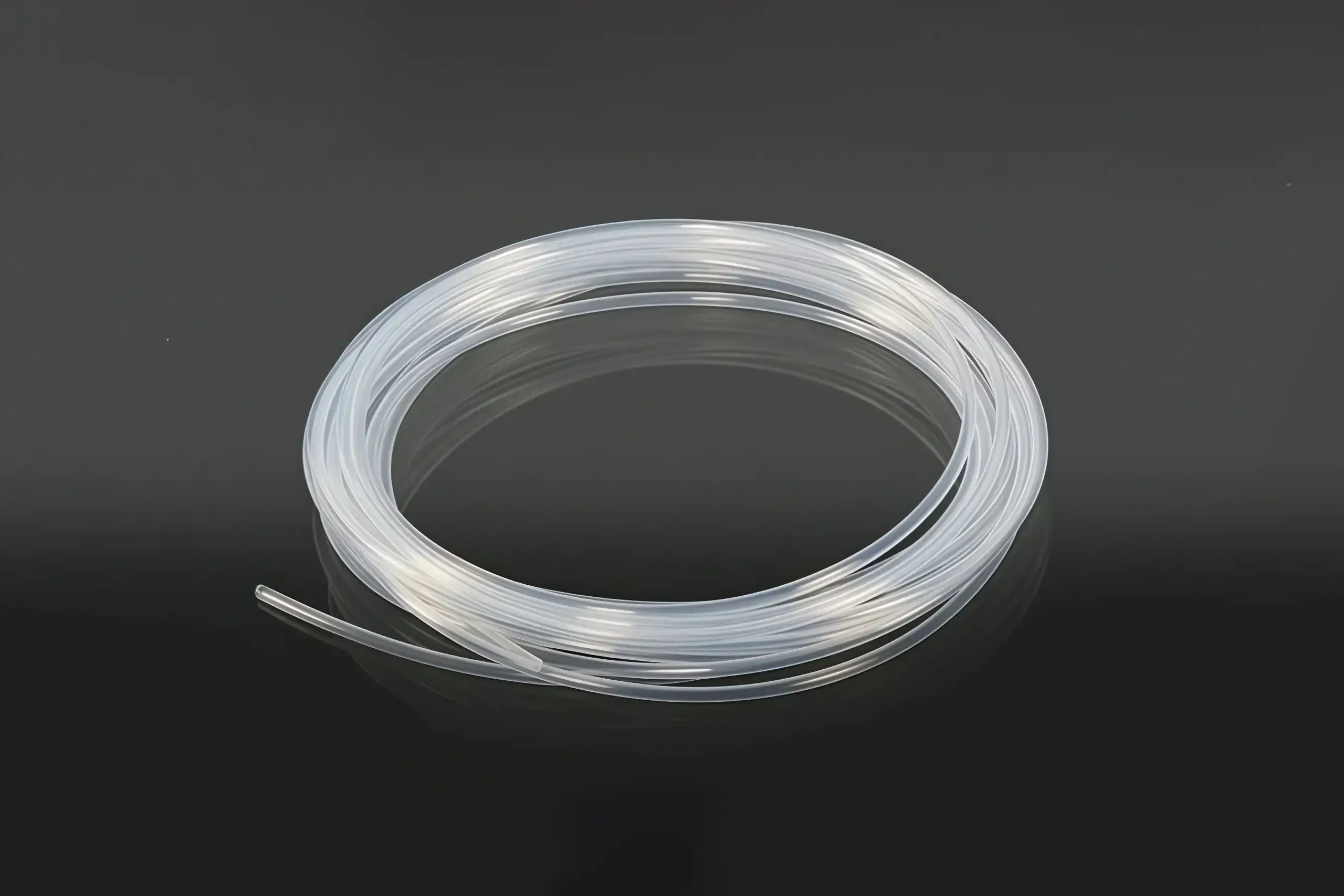(FEP & PFA Tubing)Fluoropolymer Tubing: Engineered for Chemical Stability and Extreme Environments
In semiconductor fabrication, pharmaceutical processing, and laboratory systems, tubing must resist aggressive chemicals, maintain structural integrity across wide temperature ranges, and ensure contamination-free operation. FEP and PFA tubing meet these demands with superior inertness, mechanical reliability, and optical clarity, making them essential components in high-performance fluid handling systems.
Understanding FEP Tubing: Process-Friendly and Versatile
FEP (Fluorinated Ethylene Propylene), also referred to as F46, is a thermoplastic fluoropolymer derived from PTFE. Its lower melt viscosity enables extrusion, welding, and thermoforming—capabilities that simplify fabrication compared to traditional PTFE.
Core Benefits of FEP Tubing
- Broad Thermal Range: Operational from -200°C to +200°C with retained flexibility at sub-zero temperatures.
- Exceptional Clarity: Enables visual inspection of fluid flow and detection of contaminants.
- Chemical Inertness: Resistant to solvents, acids, and UV radiation.
- Biocompatibility: Compliant with USP Class VI for medical and analytical applications.
- Heat-Shrink Capability: Low activation temperature protects sensitive components during encapsulation.
Application example: In analytical chemistry, FEP replaced silicone tubing in solvent delivery lines, eliminating swelling and extending service life under continuous organic solvent exposure.
Exploring PFA Tubing: High-Temperature Performance Leader
PFA (Perfluoroalkoxy) is designed for environments exceeding FEP’s thermal limits. Its robust molecular structure supports continuous operation at 260°C while preserving melt-processability for complex geometries.
Key Advantages of PFA Tubing
- Elevated Temperature Rating: Sustains performance at 260°C under continuous load.
- High-Purity Formulations: Available in semiconductor-grade resins with minimal extractables.
- Impermeability: Effective barrier against gas and vapor diffusion.
- Optical Transparency: Facilitates real-time process monitoring.
- Electrical Properties: Dielectric constant of 2.1 suits high-frequency applications.
Application example: A wafer processing facility upgraded etch bath liners to PFA, reducing maintenance cycles by 40% due to enhanced resistance to hot phosphoric acid.
Practical Applications Across Industries
FEP Tubing
- Optical fiber protection in data centers
- Refrigerant lines in precision cooling systems
- Corrosive drain lines in chemical storage
PFA Tubing
- Wet bench components in microelectronics
- Sterile transfer lines in bioprocessing
- High-pressure steam tracing in reactors
Manufacturing Excellence and Customization
All tubing is produced using 100% virgin resin to ensure uniformity and purity. Dimensional accuracy is maintained at ±0.1 mm, supporting leak-free connections. Customization options include inner diameters from 0.5 mm to 50 mm, variable wall thicknesses, and in-house fabrication of corrugated, coiled, or flared configurations.
Technical Specifications Summary
| Property | Specification |
|---|---|
| Appearance | Fully transparent |
| Service Temperature | FEP: -200°C to +200°C / PFA: up to 260°C |
| Volume Resistivity | >10¹⁸ Ω·m |
| Surface Resistivity | >2×10¹³ Ω |
| Dielectric Constant | 2.1 (60 Hz to 60 MHz) |
| Water Absorption | <0.01% |
| Arc Resistance | >165 seconds, no leakage |
The material exhibits non-stick surfaces, inherent flame retardancy, and complete inertness to concentrated and dilute inorganic and organic acids, bases, and esters.
Selecting the Optimal Tubing Solution
Choose FEP for cost-effective flexibility in moderate-temperature, high-clarity applications. Select PFA for maximum thermal and chemical endurance in critical processes. Provide details on media, operating conditions, and geometry for tailored recommendations and rapid sampling.



